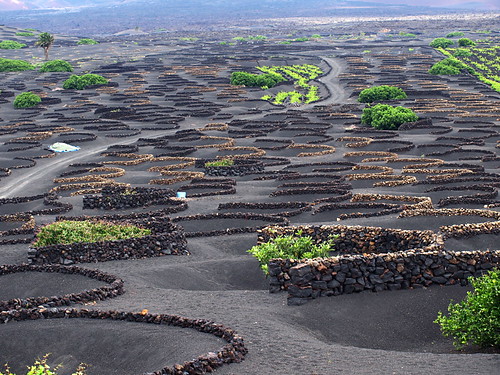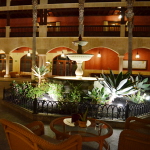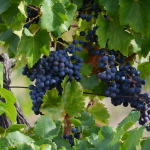Think of the great wine growing regions of the world and your mind turns to endless carpets of emerald, French Châteaus, golden Tuscan hills and the lush Napa Valley. Cut to Lanzarote and the green is replaced by barren, windswept volcanic cones beneath an unrelenting sun.

It may not be one of the world’s largest or best wine producing regions but Lanzarote’s award winning Malvasía wines can hold their heads up when it comes to quality. And given the difficulty of their birth, that’s quite some achievement.
Lanzarote was born of volcanoes, has grown up with volcanic eruptions and, less than 300 years ago suffered six years of darkness, fire, lava and volcanic ash when Timanfaya erupted. The end result is an island of such inhospitable terrain that few in their right mind would consider planting so much as a geranium, let alone the almost 5000 acres of land given over to wine production by no less than 17 bodegas (wineries).
Given the island’s almost constant winds and low rainfall (less than 150mm per annum), the vines are cultivated dry. Wells are dug into the layers of volcanic fallout to reach the topsoil where the vines are then planted. At ground level, semi-circular walls are built against the prevailing wind to protect the young plants. The area around the vines is then coated with volcanic ash. The resultant landscape is a work of art; stone-walled circles uniformly dug into the black ash and planted with tender green shoots, like circles cut into black pastry and decorated with lime leaves.
Moisture laden clouds race across Lanzarote’s slopes carried by the Trade Winds. As they descend towards the land, the highly permeable ash draws moisture from the clouds and seals it beneath its crust – Nature’s ingeniously efficient watering system. The hard working young vines absorb the minerals from the volcanic ash and produce grapes with a singular aroma and flavour which then produce Volcanic Malvasía wines which have a straw green hue, citrus and mineral aroma, are perfectly balanced and have a fresh, fruity taste which mellows and lingers – the essence of volcano.
The majority of wines produced are the white, Malvasía but you will also find some excellent, sweet Muscatel wines and some fine, raspberry pink rosés tasting of strawberries and roses. Worth tasting are the barrel matured reds which have a plummy, coffee intensity and the carbonic maceration reds which have a strong, strawberry and blackcurrant aroma and a velvety after taste.
Wine Tasting on Lanzarote
The major vine growing areas are around the La Geria and Masdache region with a smaller area around Ye-Lajares.
Stratus Bodega offers a wine tour (€12) and wine tasting at its outlet (Mon-Sat 09.00-20.00)
At El Grifo, the oldest bodega in the Canary Islands and the tenth oldest in Spain, you can also visit their wine museum (open every day 10.30 – 18.00)
Bodega La Geria offers wine and tapas tastings ranging from €8 to €26 depending on how well you’d like to get to know their wines.
Top image from Lanzarote Denominación de Origen. Buzz Trips visited Lanzarote as guests of Teguise Turismo and Sands Beach Resort
Andrea (Andy) Montgomery is a freelance travel writer and co-owner of Buzz Trips and The Real Tenerife series of travel websites. Published in The Telegraph, The Independent, Wexas Traveller, Thomas Cook Travel Magazine, EasyJet Traveller Magazine, you can read her latest content on Google+






1 Trackback / Pingback